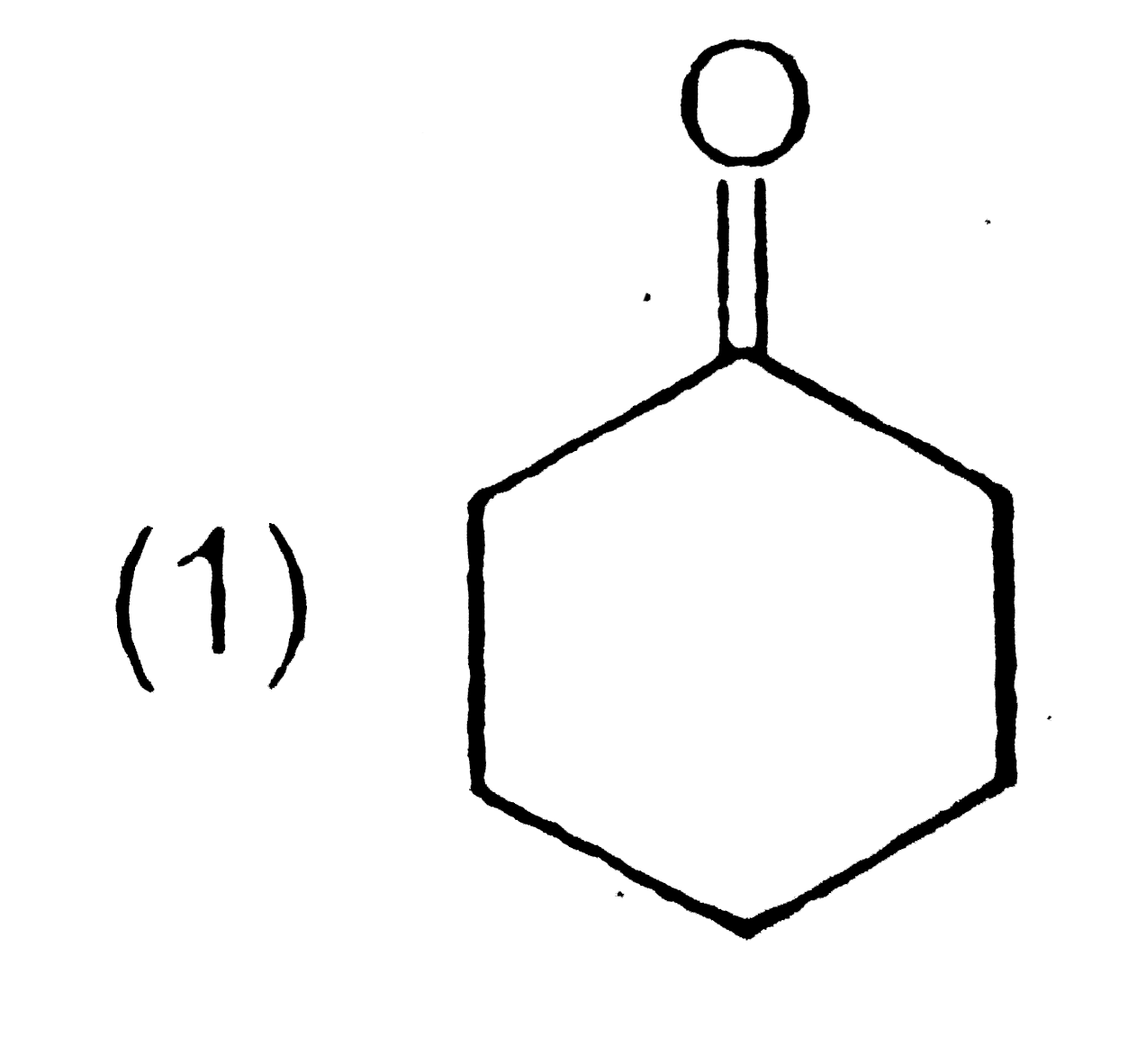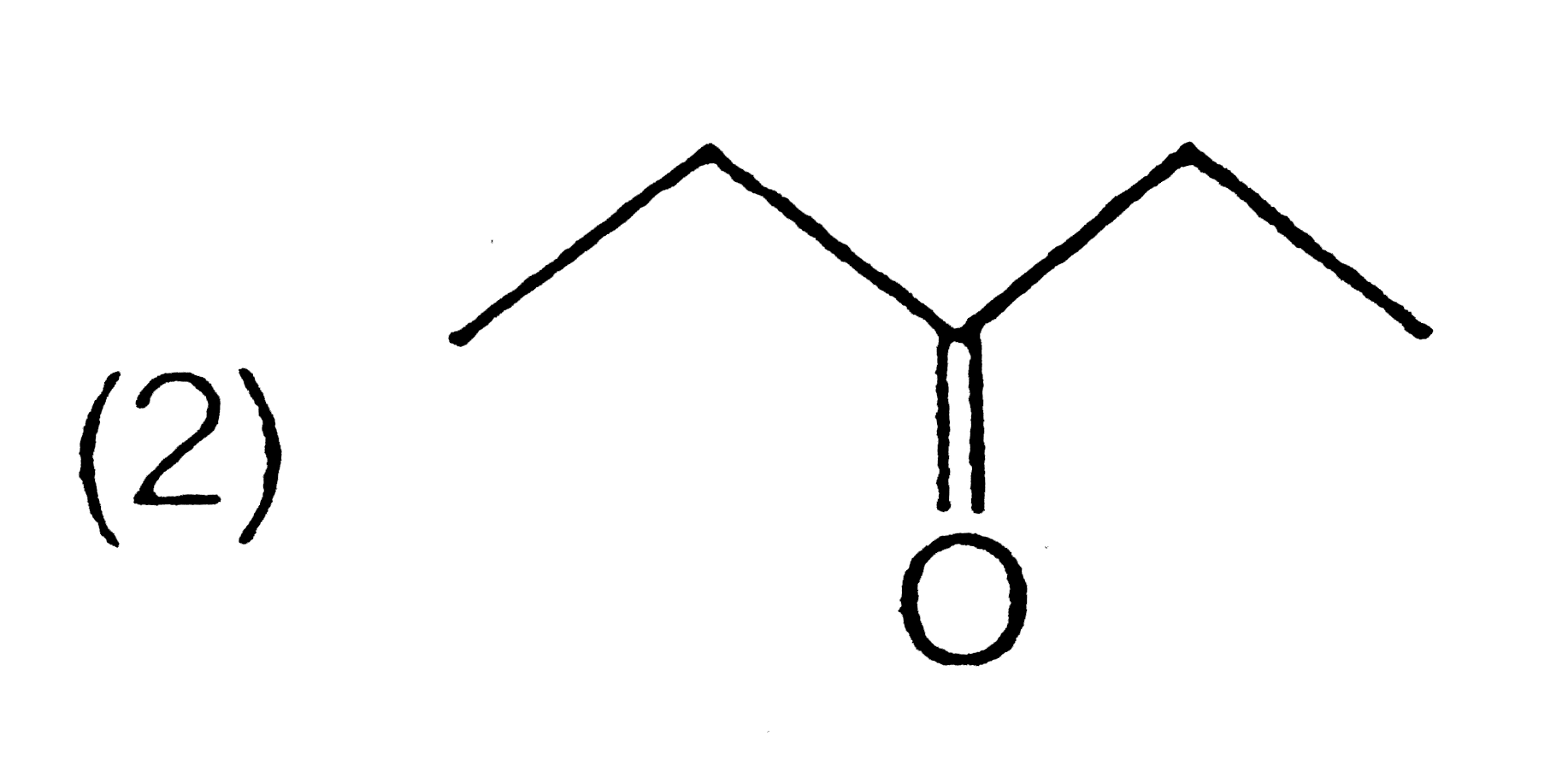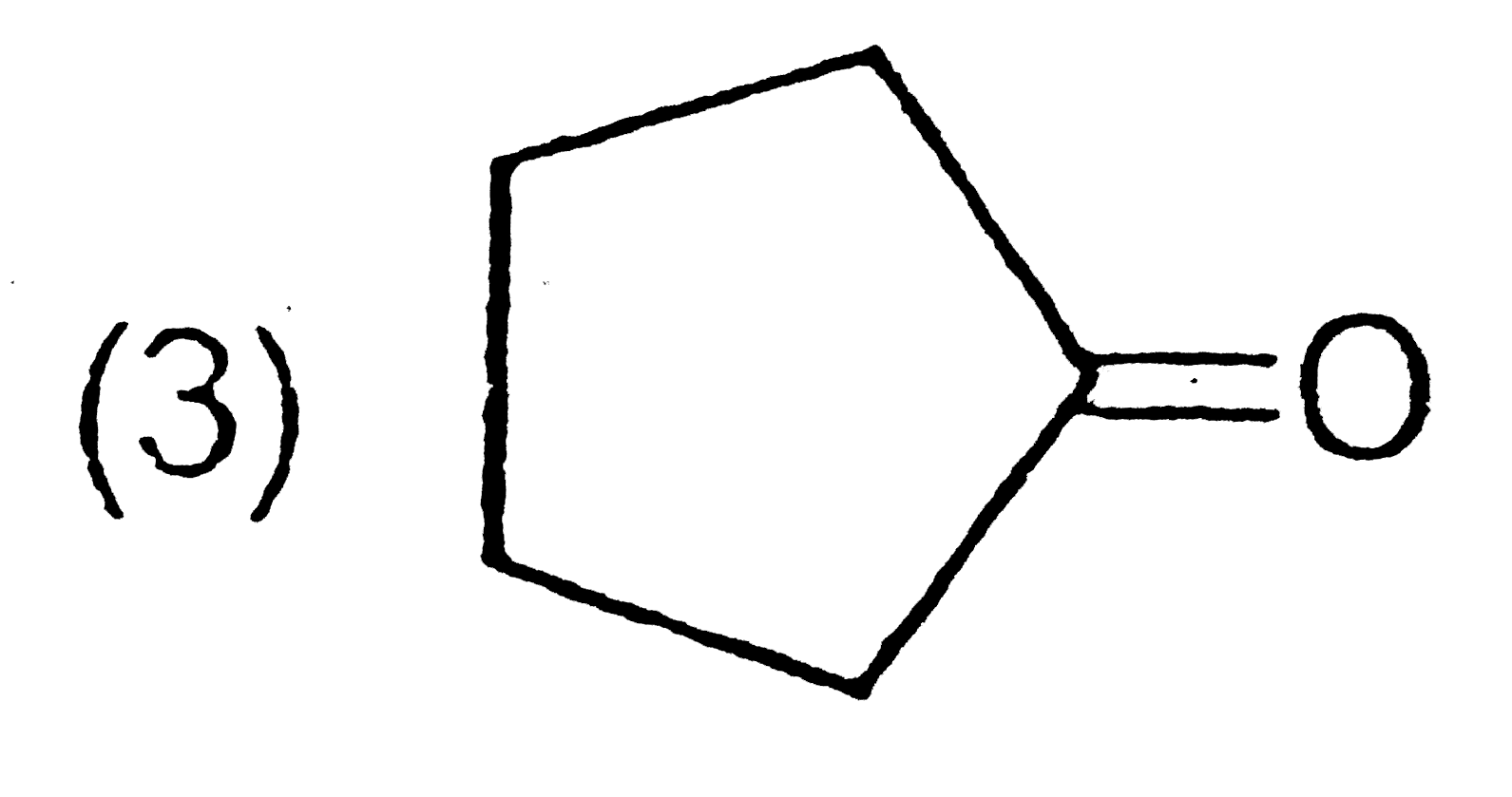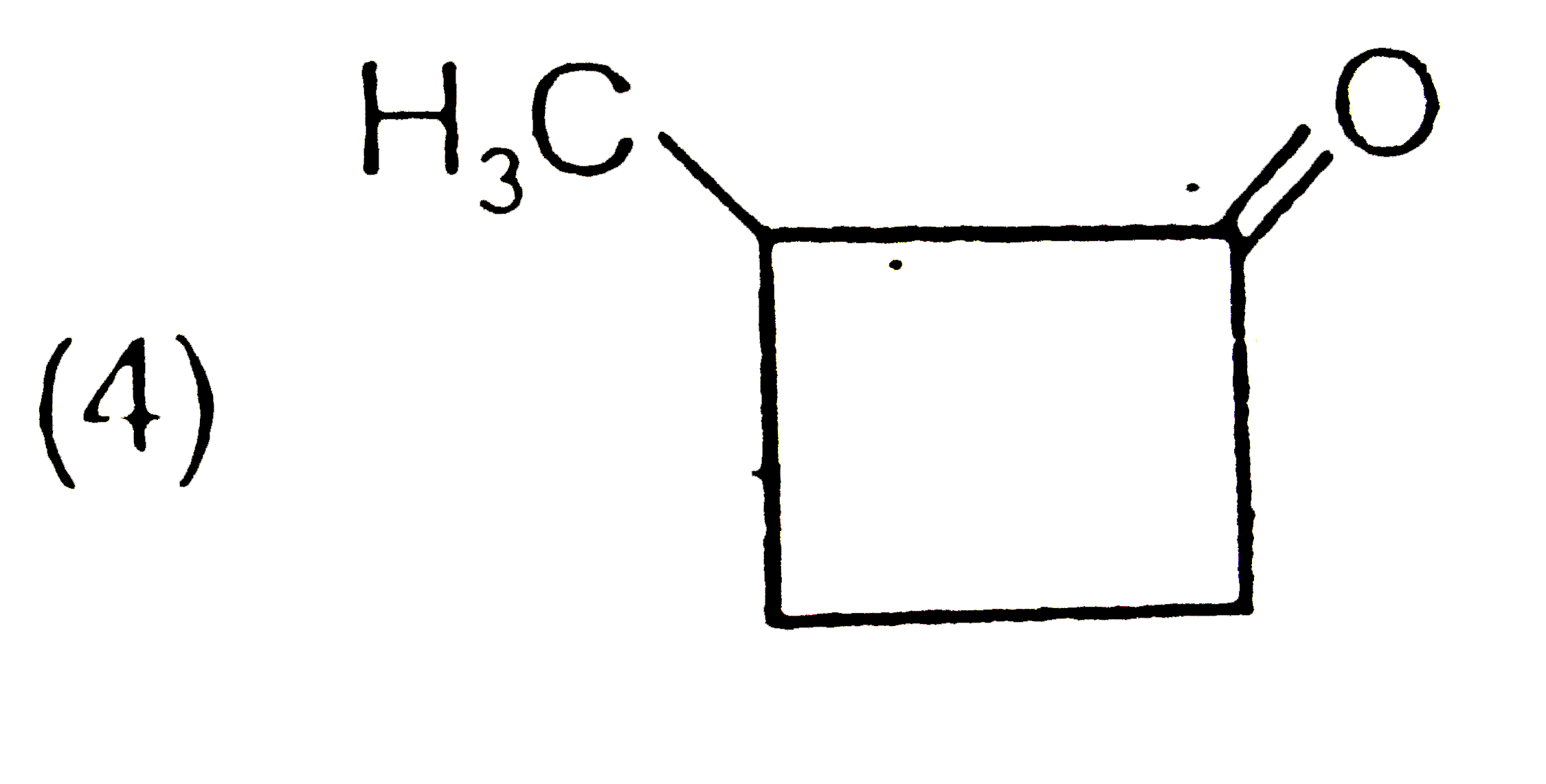An organic compound [X]. C5H8O reacts with hydroxylamine to form [Y]. In the presence of conc. H2SO4 gives δ-lactam. [X] neither give Benedicts test nor it respond positively towards haloform test. The compound [X] is




The correct Answer is:C
To solve the problem, we need to identify the organic compound (X) with the molecular formula C5H8O that reacts with hydroxylamine and forms a delta-lactam in the presence of concentrated sulfuric acid. Let's break down the information step by step.
1. Determine the Degree of Unsaturation (DU):
- The formula for calculating the degree of unsaturation (DU) is:
DU=C+1−H2
- For (X), we have:
- C = 5
- H = 8
- Therefore,
DU=5+1−82=−22=2
- This indicates that there are two degrees of unsaturation, which could correspond to either two double bonds, one triple bond, or a ring structure.
Hint: Remember that each degree of unsaturation corresponds to a ring or a double bond.
2. Analyze the Reactivity:
- The compound (X) reacts with hydroxylamine (NH2OH) to form (Y). This suggests that (X) is likely a ketone or an aldehyde since they typically react with hydroxylamine to form oximes.
- The fact that (X) does not give a Benedict's test indicates that it is not an aldehyde (as aldehydes are typically oxidized by Benedict's reagent).
- Therefore, (X) is likely a ketone.
Hint: Aldehydes give positive results in Benedict's test, while ketones do not.
3. Consider the Haloform Test:
- The haloform test is positive for methyl ketones (ketones with a CH3 group adjacent to the carbonyl). Since (X) does not respond positively to this test, it cannot be a methyl ketone.
- This further supports that (X) is a ketone without a methyl group adjacent to the carbonyl.
Hint: The haloform test is specific for methyl ketones; if the test is negative, the structure must be different.
4. Formation of Delta-Lactam:
- When (X) is treated with concentrated sulfuric acid, it forms a delta-lactam. This suggests that (X) must have a structure that can undergo a rearrangement to form a cyclic amide.
- The presence of a delta-lactam indicates that the starting compound (X) likely has a cyclic structure.
Hint: Delta-lactams are cyclic amides formed from amino acids or cyclic ketones.
5. Identify the Compound:
- Given that (X) is a ketone with 5 carbons, does not give a haloform test, and can form a delta-lactam, the most likely candidate is cyclopentanone.
- Cyclopentanone has the formula C5H8O, fits the criteria of not being a methyl ketone, and can undergo the necessary reactions to form a delta-lactam.
Hint: Look for cyclic structures with the correct number of carbons and functional groups that match the given reactions.
Conclusion:
The compound (X) is cyclopentanone.
- The formula for calculating the degree of unsaturation (DU) is:
DU=C+1−H2
- For (X), we have:
- C = 5
- H = 8
- Therefore,
DU=5+1−82=−22=2
- This indicates that there are two degrees of unsaturation, which could correspond to either two double bonds, one triple bond, or a ring structure.
- The compound (X) reacts with hydroxylamine (NH2OH) to form (Y). This suggests that (X) is likely a ketone or an aldehyde since they typically react with hydroxylamine to form oximes.
- The fact that (X) does not give a Benedict's test indicates that it is not an aldehyde (as aldehydes are typically oxidized by Benedict's reagent).
- Therefore, (X) is likely a ketone.
- The haloform test is positive for methyl ketones (ketones with a CH3 group adjacent to the carbonyl). Since (X) does not respond positively to this test, it cannot be a methyl ketone.
- This further supports that (X) is a ketone without a methyl group adjacent to the carbonyl.
- When (X) is treated with concentrated sulfuric acid, it forms a delta-lactam. This suggests that (X) must have a structure that can undergo a rearrangement to form a cyclic amide.
- The presence of a delta-lactam indicates that the starting compound (X) likely has a cyclic structure.
- Given that (X) is a ketone with 5 carbons, does not give a haloform test, and can form a delta-lactam, the most likely candidate is cyclopentanone.
- Cyclopentanone has the formula C5H8O, fits the criteria of not being a methyl ketone, and can undergo the necessary reactions to form a delta-lactam.
The compound (X) is cyclopentanone.
Topper's Solved these Questions
- BOOK - AAKASH INSTITUTECHAPTER - ALDEHYDES, KETONES AND CARBOXYLIC ACIDS EXERCISE - Assignment (SECTION -C Objective type questions more than one options are correct)11videos
ALDEHYDES, KETONES AND CARBOXYLIC ACIDS
- BOOK - AAKASH INSTITUTECHAPTER - ALDEHYDES, KETONES AND CARBOXYLIC ACIDS EXERCISE - Assignment (SECTION -D Linked Comprehension type Questions)6videos
ALDEHYDES, KETONES AND CARBOXYLIC ACIDS
- BOOK - AAKASH INSTITUTECHAPTER - ALDEHYDES, KETONES AND CARBOXYLIC ACIDS EXERCISE - Assignment (Section A Competition Level Questions)60videos
ALDEHYDES, KETONES AND CARBOXYLIC ACIDS
- BOOK - AAKASH INSTITUTECHAPTER - ALCOHOLS, PHENOLS AND ETHERS EXERCISE - Try Yourself5videos
ALCOHOLS, PHENOLS AND ETHERS
- BOOK - AAKASH INSTITUTECHAPTER - AMINES EXERCISE - Assignment Section -J (Aakash Challengers Questions)9videos
AMINES
Similar Questions
An organic compound A(C2H6O) reacts with sodium to form a compound B with the evolution of H2 and gives a yellow compound C when treated with iodine and NaOH. When heated with conc. H2SO4 at 413 K, it gives a compound D(C4H10O) which on treatment with cone. HI at 873 K gives E. D is also obtained when Bis heated with E. Identify A, B, C, D and E and write equations for the reactions involved.
View SolutionAn organic compound A reacts with sodium metal and forms B. On heating with conc. H2SO4 at 140∘C A gives diethyl ether. A and B are respectively
View Solution
Knowledge Check
- Question 1 - Select One
An organic compound A reacts with sodium metal and forms B. On heating with conc. H2SO4, A gives diethyl ether. So A and B are
AC3H7OHandCH3ONaBCH3OHandCH3ONaCC4H9OHandC4H9ONaDC2H5OHandC2H5ONa - Question 2 - Select One
An organic compound [A] reacts with sodium metal to from [B]. On heating with conc. H2SO4, [A] gives diethyl ether. Compound [A] and[B] are respectively.
AC2H5OH and C2H5ONaBC3H7OH and C3H7ONaCCH3OH and CH3ONaDC4H9OH and C4H9ONa. - Question 3 - Select One
An organic compound (A) reacts with sodium metal and forms (B). On heating with conc. H2SO4, (A) gives diethyl ether. (A) and (B) are respectively
AC2H5OHandC2H5ONaBC3H7OHandCH3ONaCCH3OHandCH3ONaDC4H9OHandC4H9ONa
An organic compound X(C4H8O2) gives positive test with NaOH and phenopthalein. Structure of X will be :
View SolutionAn organic compound X (C4H8O2) gives positive test with NaOH and phenophtalein. Structure of X will be :
View SolutionAn organic compound (A) C2H6O react with
sodium metal to form compound (B) with
evolution of H2 gas give yellow compound
(C) with alkaline iodine. When (A) is heated with
conc. H2SO4 at 413K gives a compound (D) C4H10O.
Which treatment with conc. HI at 373 K gives (E).
The compound ( D) also obtained when (B) is
heated with (E). Identify compound(E).View SolutionA neutral compound C4H8O2, reduce Fehling's solution , and liberate H2gas when treated with sodium metal and give positive iodoform test. The compound is
View SolutionCompound (X)C4H8O , which reacts with 2,4-DNP derivative and gives negative haloform test is :
View Solution

